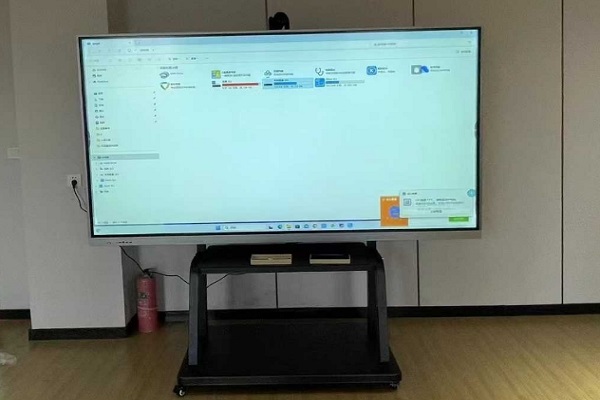Introduction and application of Smart Whiteboard dual system
(I) Single-System Smart Interactive Whiteboard: Meeting Basic Needs in Different Scenarios
As a foundational device for smart office work, the single-system Smart Interactive Whiteboard has a clear functional positioning based on its system characteristics, precisely matching the core needs of different user groups.
• Android: A "Efficient Toolkit" for Lightweight Meetings
The Android Smart Interactive Whiteboard, with its lightweight and easy-to-use features, meets the basic meeting needs of small and medium-sized enterprises, training institutions, and other scenarios. Its core advantage lies in its optimized electronic whiteboard and wireless screen sharing features. During small team weekly meetings, participants can connect to theSmart Interactive Whiteboard via their phones or tablets and easily share documents, images, videos, and other content to a larger screen. This eliminates the need for USB drives or data cables, and transmission speeds of over 100Mbps, eliminating the tedious task of copying files. Furthermore, the Android system supports downloading third-party conferencing software, such as Zoom and DingTalk, through the app store. Enterprises can add features based on their collaborative habits, creating a flexible combination of "basic functionality + personalized expansion."
(II) Dual-System Smart Interactive Whiteboard: An "All-In-One Solution" that Breaks Scenario Limitations
The dual-system Smart Interactive Whiteboard, with its innovative design combining an Android system with a pluggable OPS microcomputer, transcends the functional limitations of a single system, becoming a core smart office device that meets the needs of multiple scenarios.
• Hardware Design: Modular Innovation for Simplified Operations and Maintenance
The core of the dual-system design lies in the pluggable OPS microcomputer. This design independently encapsulates the Windows system hardware, facilitating installation and significantly reducing maintenance and upgrade costs. For example, if an enterprise needs to improve the computing performance of its Windows system, it only needs to replace the processor, memory, or hard drive in the OPS module without having to replace the entire Smart Interactive Whiteboard. This can reduce hardware upgrade costs by 40%. When a device malfunctions, technicians can directly remove the OPS module for maintenance without having to wait for the entire machine to be repaired, thus reducing meeting interruptions. Taking Kangwei Weiye as an example, its customized OPS module uses an industrial-grade motherboard, supports stable operation 24/7, and is equipped with an Intel Core i5/i7 high-performance processor, 16GB DDR4 memory, and a 512GB SSD. It can smoothly run medium- and heavy-duty software such as Photoshop and Pr. At the same time, it ensures that the Android and Windows systems do not interfere with each other when running independently, avoiding problems such as lag or data loss caused by system switching.

